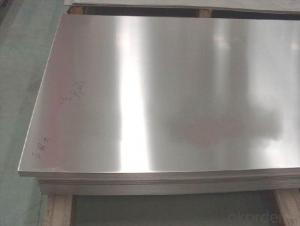Aluminum profiles are the unsung heroes of modern architecture. They are the silent backbone that supports the grandeur of our buildings, bridges, and transportation systems. But what exactly are aluminum profiles, and why are they so important? Let’s dive into the world of aluminum profiles and explore their role in designing the architecture of tomorrow.
The Essence of Aluminum Profiles
Aluminum profiles are extruded shapes made from aluminum alloy, which are used as structural components in various applications. They are lightweight, strong, and corrosion-resistant, making them ideal for both indoor and outdoor use. The versatility of aluminum profiles is astounding; they can be found in everything from window frames to bicycle frames, and from modern art installations to industrial machinery.
A Brief History Lesson
The use of aluminum dates back to ancient times, but it wasn’t until the 19th century that aluminum extrusion was invented. The process involves heating aluminum alloy and then forcing it through a die to create a specific shape. This technology has evolved over the years, allowing for more complex and intricate designs to be produced.
Sustainability and the Environment
One of the most compelling reasons for using aluminum profiles in architecture is their sustainability. Aluminum is a highly recyclable material, with nearly 75% of all aluminum ever produced still in use today. This means that when an aluminum structure reaches the end of its life, it can be melted down and repurposed without losing any of its original properties.
Innovations in Design and Technology
The advancements in design and technology have opened up a world of possibilities for aluminum profiles. With the help of computer-aided design (CAD) and computer-aided manufacturing (CAM), architects and engineers can create intricate and unique aluminum structures that were once thought impossible. These innovations have not only improved the aesthetics of buildings but also their functionality and efficiency.
The Role of Aluminum in Green Buildings
Green buildings are designed to reduce their impact on the environment and promote sustainability. Aluminum profiles play a crucial role in this by providing lightweight and energy-efficient solutions. For example, aluminum window frames can improve insulation, reducing the need for heating and cooling systems.
The Future of Aluminum Profiles
As we look to the future, aluminum profiles will continue to evolve and adapt to meet the changing needs of architecture. With the growing focus on sustainability and the push for more efficient buildings, aluminum profiles will be at the forefront of these developments. We can expect to see more innovative uses of aluminum in the coming years, as architects and engineers continue to push the boundaries of what’s possible.
Personalizing Aluminum Profiles
One of the exciting aspects of working with aluminum profiles is the ability to personalize them. Whether it’s for a residential project or a commercial one, aluminum profiles can be customized to fit the specific needs and desires of the client. This personal touch adds a unique element to the architecture, making each project stand out from the rest.
The Artistry of Aluminum
Aluminum profiles are not just functional; they are also a form of art. The way they are used in architecture can create stunning visual effects, adding an extra layer of beauty to the structures they support. From the sleek lines of a modern building to the intricate patterns of a decorative facade, aluminum profiles can elevate the aesthetic appeal of any project.
Conclusion
Aluminum profiles are more than just structural components; they are the building blocks of tomorrow’s architecture. As we continue to innovate and push the boundaries of design, aluminum profiles will play a central role in shaping our future landscapes. With their sustainability, versatility, and adaptability, aluminum profiles are truly the architects’ best friend.
So, the next time you walk past a building or bridge, take a moment to appreciate the aluminum profiles that make it all possible. They may be quiet and unassuming, but their impact on the world of architecture is anything but subtle.

